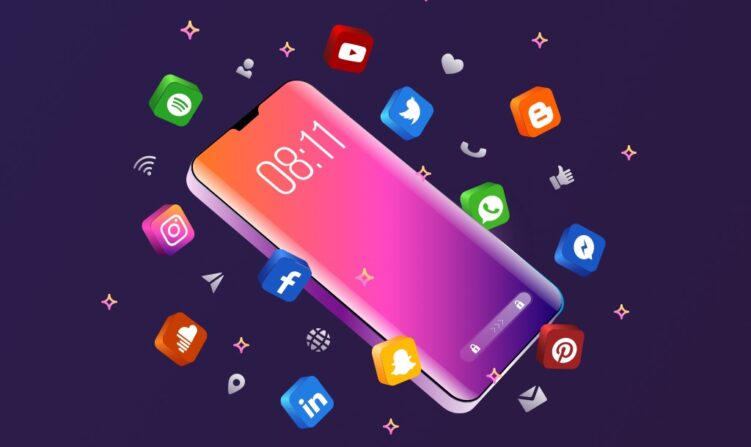Our phones record more than screen time. Every tap, scroll, and swipe reflects how we weigh choices and make judgments—sometimes faster than we’d like to admit.
The apps you use most often, how long you spend on them, and how you interact with features tell a story about your decision-making patterns, risk tolerance, and even your impulse control.
Below, we break down what app behavior reveals about your thinking process—and how to spot trends that influence your daily decisions.
Key Highlights
- App usage mirrors how you handle choices under pressure.
- Habit-forming apps often align with impulsive or intuitive decision styles.
- Productivity apps attract long-term planners and reflective thinkers.
- Game and gambling apps highlight your approach to risk and reward.
- Frequent switching between apps may reflect decision fatigue.
- Data from app behavior can support better self-awareness and habit control.
What Repeated App Behavior Really Means

If you’re constantly checking social media, toggling between shopping apps, or spending hours tweaking your schedule in a planner app, that’s not random.
Each behavior reveals a pattern. And each pattern points to how your mind filters priorities, processes risk, and balances emotions with logic.
For example:
- Constantly checking email may indicate a need for control or fear of missing out.
- Long sessions on Reddit or YouTube suggest an exploratory, open-ended style.
- Minimal use of notifications often signals high self-regulation.
Your brain leans on shortcuts—called heuristics—when navigating app choices. If you always default to the same food delivery service, that’s your mind avoiding cognitive load.
Repetition feels safer than evaluating options from scratch. Over time, the apps you rely on turn into decision aids. That’s not always good.
Fast Apps, Fast Decisions
Apps built for speed encourage snap decisions. Think swipe-based dating apps, one-click purchases, or gamified rewards in shopping apps.
If these dominate your usage, you likely lean toward intuitive decision-making. You trust your gut. You act quickly. You may also take more risks than you realize.
This doesn’t mean you’re reckless. It just means you value speed over analysis.
People who enjoy frictionless interfaces usually prefer minimal mental effort when making daily decisions. But that style can lead to problems when stakes are high—like financial planning or relationship choices.
Here’s where it gets interesting. Some platforms are engineered to match this behavior. A clear example comes from the rise of best online casinos Australia, which deliver fast, interactive decisions wrapped in instant rewards. These platforms rely on intuitive choices—when to spin, when to cash out, when to chase a win. The reward cycle is tight and the decisions feel simple, but they reflect deeper tendencies toward impulsivity and risk acceptance.
If you find yourself drawn to apps like this, it’s not about the app. It’s about what it activates in your brain: speed, novelty, and reward anticipation.
Focused Apps, Slower Decisions

Apps that require planning, input, or routine—like budgeting software, habit trackers, or calendar tools—favor reflective thinkers. If these make up the bulk of your usage, you likely fall into the analytical category.
Analytical decision-makers like control. They tend to take time with choices, compare options, and return to past data before acting. These users may have low tolerance for pop-ups, autoplay videos, or constant push alerts. Every interaction needs to serve a purpose.
Interestingly, there’s often a gap between aspiration and action. People install productivity apps hoping to become more organized. But actual usage shows whether they follow through.
If you downloaded five budgeting tools but don’t use any consistently, your style might lean toward avoidance—especially with financial decisions.
Consistency tells the truth more than app category. If you’re using meditation or journaling apps every morning, that’s intentional. If you just keep downloading new ones, you’re probably still testing your style.
App Hopping and Mental Overload
There’s a third pattern that sits between impulsive and analytical: erratic use. This often shows up through high app-switching behavior—jumping between platforms, quitting and reopening apps repeatedly, or using multiple tools for the same task.
It’s not necessarily about indecision. It’s often about fatigue. When your mind hits decision overload, it starts skipping steps. It reaches for distraction, even in the middle of important choices. App hopping can be a red flag for burnout, overstimulation, or lack of internal clarity.
The longer your average session across all apps, the more likely you’re avoiding a decision somewhere else. The brain doesn’t like unfinished tasks. If you’re constantly moving between apps without resolution, there’s probably an underlying conflict—one you’re trying to outrun with screen time.
The Role of Notifications and Triggers

Push alerts tell you more about your decision-making than you think. Do you turn off all notifications except from key apps? Do you leave them all on and act immediately every time a ding goes off?
People who mute most alerts often rely on internal cues. They plan ahead, set boundaries, and dislike external pressure. Those who respond instantly often operate under external triggers. They may struggle to filter noise from priority. That doesn’t mean they’re less organized—it just means they react faster to stimuli.
App developers know this. That’s why streaks, countdowns, badges, and time-limited rewards exist. If you’re swayed by them, your decision style likely favors urgency over strategy.
What Does Your App Use Reveal About Risk?
Certain apps reveal more than personality—they reveal comfort with risk. If you frequently use stock trading apps, online casinos, or auction-style platforms, you’re navigating high-stakes decisions quickly. The question is: are you chasing control or chasing reward?
In the context of mobile casinos, the ease of use often masks the complexity of the decisions being made. Clicking a button looks simple. But what you’re doing is weighing probability, trust in the system, and emotional pull—all in a few seconds. If those decisions come easily to you, you probably make fast calls in other areas too, like dating, career switches, or major purchases.
Your approach to in-app spending also signals your risk boundary. Do you buy instantly? Do you read reviews? Do you abandon carts often? Each step tells a story.
Learning From Your Patterns
You don’t have to track every move, but if you pause and review your app usage once a month, you’ll spot trends.
Ask yourself:
- Which apps eat most of my time—and are they worth it?
- Do I return to the same apps because they help or because they’re easy?
- How often do I download tools and abandon them?
- Do I follow through on what the app is designed to support (budgeting, wellness, scheduling)?
- Which apps make me feel drained, and which ones give clarity?
Your phone isn’t just a device. It’s a mirror.
Final Takeaway: Every App Is a Decision Point

You don’t need to delete everything or change your system overnight. But if you want to improve your decision-making, start by watching where your time and attention go.
The best decisions don’t always come from better willpower. They come from better environments. When you change how you use your apps, you change the way you approach decisions in real life—one tap at a time.
You’re always deciding, even when it feels automatic. Make sure those micro-decisions are aligned with who you want to become.




